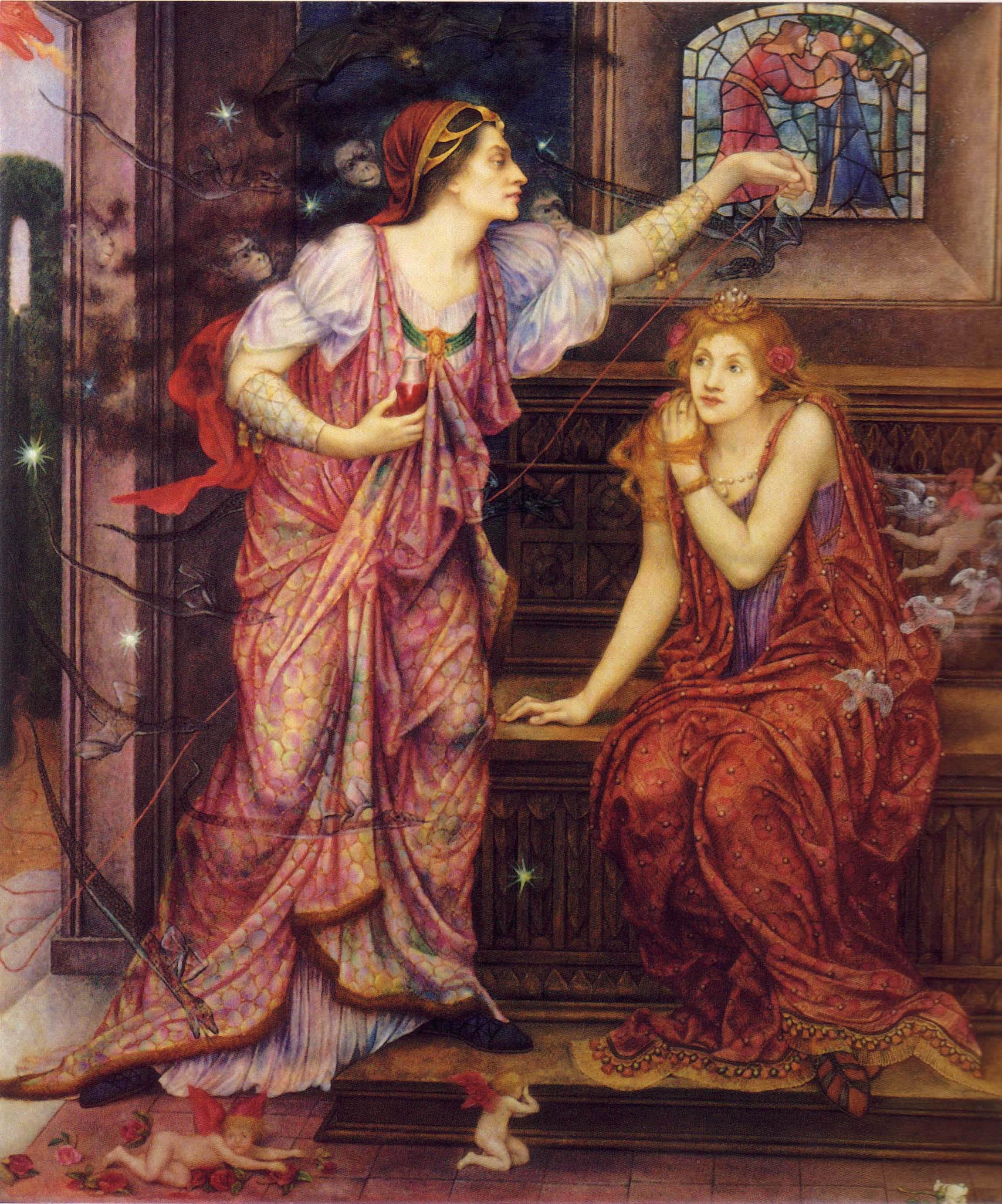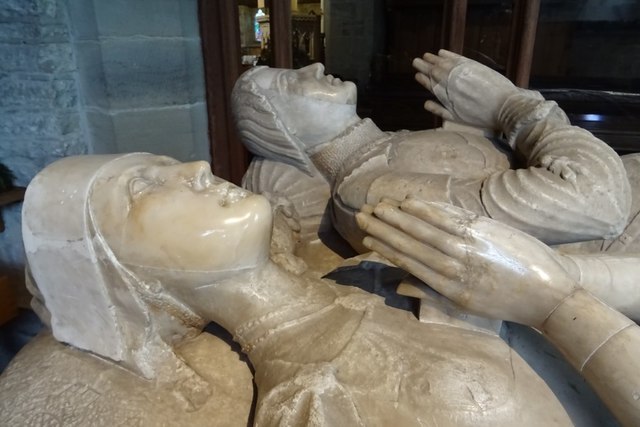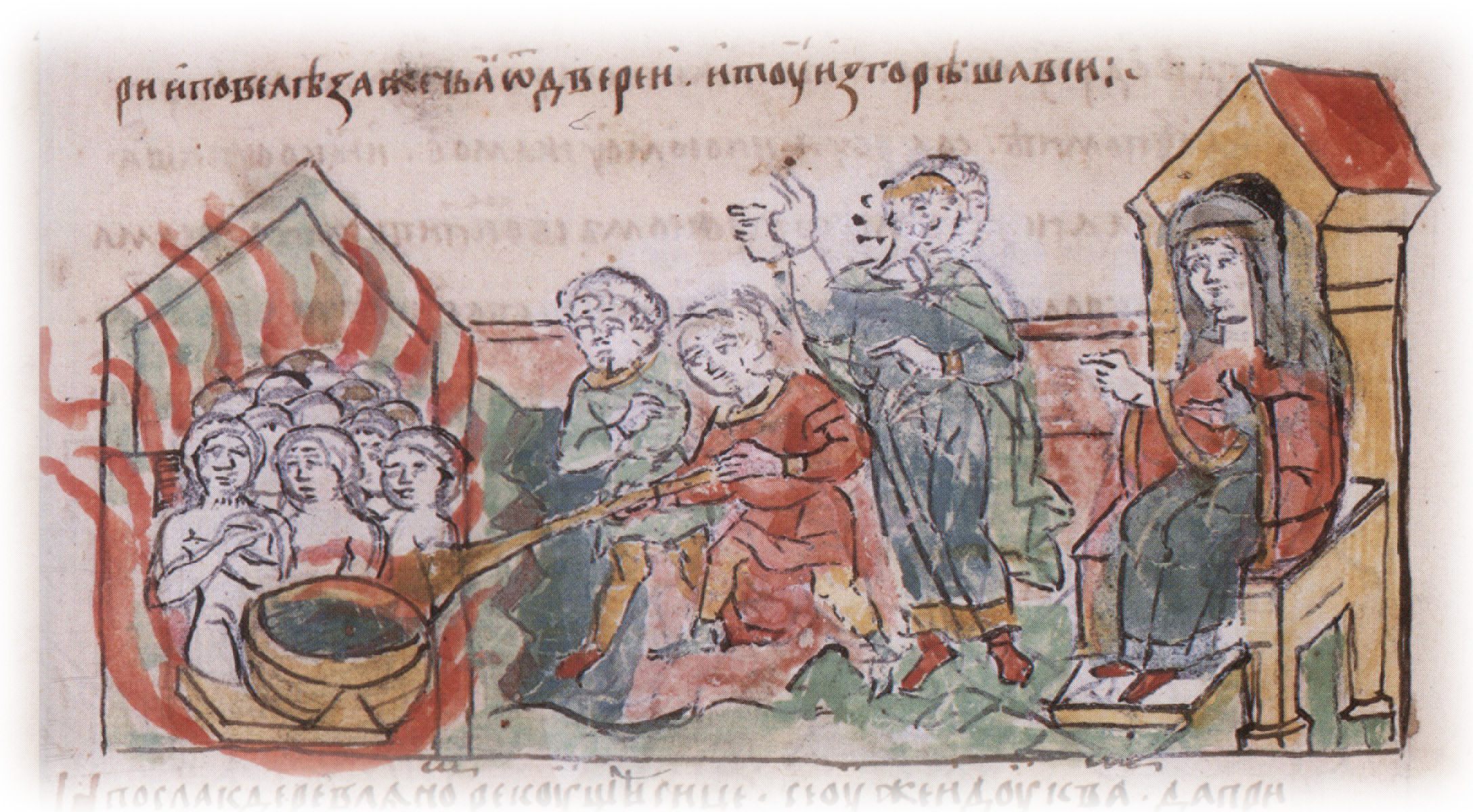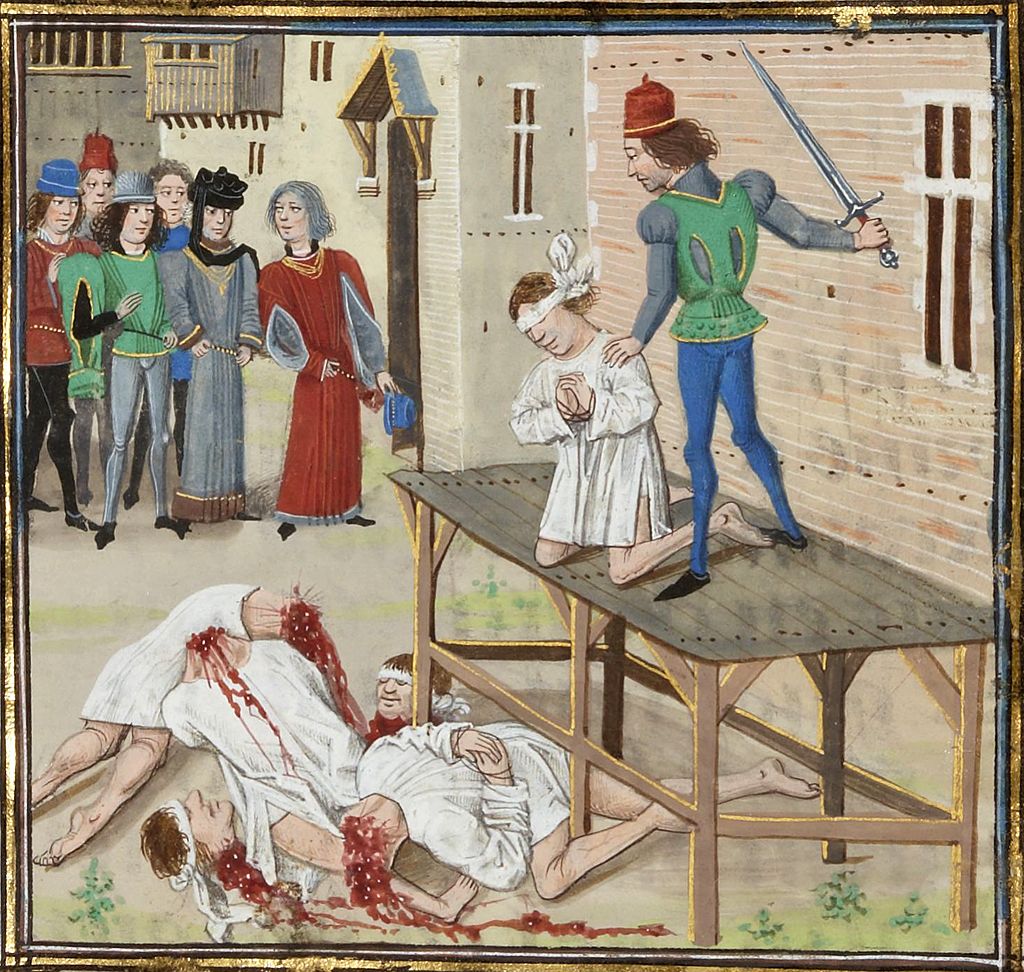“It is a truth universally acknowledged, that a woman excelling in History must be questioned in ways that a man is not and/or relegated to the side-lines of the history she has shaped” – Jane Austen probably.
The interesting thing about researching women (and queer people, and people of colour) in history is discovering the extent of how desperately their achievements and stories are picked apart and analysed rather than accepted or remembered. Before a woman can gain a reputation she must first overcome the inherent weakness of being a woman, which of course she can’t do, so many stories are lost.
In the continuing quest to rescue these stories from obscurity we have these four women. Eleanor of Aquitaine is remembered for being the stubborn and treacherous prisoner of her husband for fifteen years, instead of the woman who expanded the tradition of courtly love, protected her lands, and managed her son’s kingdoms while they were off getting captured for wars. Ellen Gethin is known as Ellen the Terrible but her story has been committed to folklore with apparently little evidence even though she was known as Ellen the Terrible. Olga of Kiev is remembered as a Saint who introduced Christianity into Eastern Europe rather than for practically wiping out a neighbouring tribe when they had the audacity to murder her husband and attempt to marry her off. Finally, we have Jeanne de Clisson who terrorised the French army during the Hundred Years. Apparently, there isn’t enough evidence for the story of her life to be considered true, despite the repeated mentions of it in French legal records. And English records. And several chronicles. And she appears by name in the 1347 Treaty of Calais. But y’know, apart from that…
Eleanor of Aquitaine
Sometime in the early 1120s, William X, Duke of Aquitaine and his wife, Aénor de Châtellerault, had a daughter they named Eleanor. At the time, Aquitaine was one of the great cultural capitals of Europe and Eleanor it’s heir. While royal women of the time could expect something of an education, Eleanor’s father went all out. Eleanor was educated in household management, needlepoint, sewing, spinning, weaving, dancing, entertaining, music, singing, riding, hawking, hunting, arithmetic, astronomy, history, literature, geography, philosophy, and languages. With this hefty grounding in life, Eleanor became one of the most formidable women of the twelfth century.
William died when Eleanor was somewhere between twelve and fifteen. She was committed to the care of King Louis VI of France who, in a move that surprised absolutely no one, married her to his son Louis VII in 1137. Louis and Eleanor became King and Queen of France later that year but the marriage was relatively unsuccessful. Louis was known for being weak willed while Eleanor was known for being strong and forceful. They didn’t have a male heir either, though they did have two daughters together.
When Louis decided to join the Second Crusade in 1147, Eleanor went with him except she didn’t go as Eleanor, Queen of France, looking out for her husband’s interests. She took the vow in her own right, declaring herself as Duchess of Aquitaine. Around this time, she was rumoured to have had affairs with her uncle, Prince Raymond, Geoffrey of Anjou, and Saladin. Even though she was a potential adulteress who had shown her husband up by excelling where he failed on crusade, it was Eleanor who repeatedly petitioned to have her marriage annulled. In 1152, she was successful and the marriage was dissolved.
Eleanor returned to Aquitaine which at no point had she yielded to her husband. She maintained her authority, her lands, and went on to quickly arrange her own second marriage. For her groom, she chose Henry of Normandy, heir to the throne of England. Incidentally, Henry was the son of Geoffrey of Anjou meaning Eleanor potentially had an affair with her own father in law. Once again, she retained authority over Aquitaine.
Marriage to Henry was a little more successful on the heir front. Together they had three daughters and four sons but they argued frequently, and Henry was regularly unfaithful. After fifteen years of marriage Eleanor packed her bags and went home to Aquitaine, separating from Henry before such a thing was even a concept. Her court became known as the Court of Love, surpassing the cultural contributions of her father’s. She did not however live quietly. When her sons decided they wanted to rebel against their father, Eleanor supported them financially, and by providing significant military aid. The rebellion was unsuccessful and Eleanor was placed in varying stages of imprisonment for her treason.
She remained in the custody of her husband until his death, whereupon their son Richard became King of England and made her Queen Regent. After him came King John who made her ambassador to France. She defended her lands and his, going so far as to march into cities herself knowing that their enemies were prepared to besiege them. At one point, she was captured but negotiated her own release and continued with her journey as if nothing had happened.
When she died, the nuns of the convent she had eventually retired to described her as, “a queen who surpassed almost all the queens of the world.” One has to wonder who on earth they were comparing her too because surely no other contemporary queen has been as accomplished or fierce.

Ellen Gethin

Ellen Gethin or ‘Ellen the Terrible’ lived in the Welsh Marches during the fifteenth century. At this point in history, the Welsh princes had already been wiped out by their Saes neighbours but feuding between the noble families of Wales continued. Ellen was born into such a family and as a young woman, her brother, Dafydd Fychan, was murdered by their cousin Sion Hir ap Philyp Fychan.
Swearing revenge on Sion Hir, Ellen devoted herself to the longbow. After some years of this, Sion Hir entered an archery competition which Ellen, dressed as a man, also entered. According to legend, she remained quiet throughout the tournament, progressing through the rounds without drawing attention to herself. Her final round pitted her against Sion Hir who praised her skill but claimed that he wouldn’t be beaten. The two fired their arrows but they landed so closely that it couldn’t be discerned which of the two had won. Ellen suggested that Sion Hir take a closer look, which he did, before he called back that his arrow was slightly closer. Ellen apparently called back something along the lines of, “Congratulations, here’s your prize,” before she fired an arrow directly into his heart, killing him instantly.
In the immediate confusion, Ellen found a quiet place where she slipped off her cap and presented once more as a woman. Nobody recognised her as they hunted for the man who had killed Sion Hir, and Ellen returned home where she married into the prominent Vaughan family and lived a relatively quiet life.
Olga of Kiev
In the tenth century, Eastern Europe was divided among various tribes operating under princes and warlords. One of the largest of these tribes was the Kievan Rus, ruled by Prince Igor the Old who married a young woman named Olga. In the year 945, Igor visited a neighbouring tribe, the Drevlians to collect tribute which was owed to him but hadn’t been paid for a generation. As he had a larger army, the Drevlians paid up but en route home, Igor decided that they hadn’t paid enough. He returned with a smaller contingent and demanded additional tribute which the Drevlians were not inclined to offer. Instead, they captured Igor, tied him to two bent trees, and allowed the trees to return to their original position, thus literally ripping Igor apart.
Enter: Olga.
With Igor dead, Olga acted as the equivalent of regent for their infant son. After murdering her husband, the Drevlians sent a contingency of diplomats to propose a marriage between Olga and their own chief, Prince Mal. Pretending to be flattered, Olga told them to return on the morrow in their boat so that they may be carried inside her castle. Overnight, she had her men dig a substantial trench just beyond the castle walls. When the diplomats returned with their boat, they thought they were being accorded a great honour as Olga’s men lifted them onto their shoulders. They probably thought it was a great honour right up until the point where the men threw the boat into the trench and began burying the diplomats alive. Apparently, Olga herself stood among them and watched, going so far as to ask the screaming diplomats if they were enjoying the honour accorded them.
But Olga wasn’t done. Before the Drevlians could wonder at the whereabouts of their diplomats, Olga sent them a message. In it, she said she was satisfied with the offer of marriage to Prince Mal and asked that they send their best and most noble men to Rus. A deputation of their finest men was indeed dispatched and Olga invited them to bathe before presenting themselves to her. Her servants conveyed them to the bathhouse and under Olga’s orders, locked the doors behind them and set the building on fire, killing everyone inside.
At this point, Olga wasn’t even halfway through her vengeance. She sent another message to the Drevlians saying that before she could marry Prince Mal, she had to properly mourn her husband. She asked them to bring vast quantities of wine and food so she could hold a funeral feast at the place where Igor had been murdered. With no idea that everyone they had sent to Olga was now dead, the Drevlians obliged. Olga did actually hold the feast and went to her husband’s tomb to mourn him. She invited the Drevlians to join her and suggested they partake of the copious amount of wine. When they were drunk enough, she had her men kill them all before she returned to Rus to gather a larger army with the intent of finishing off the survivors.
Now Olga declared war on them. Her armies swiftly drove back the Drevlians and they found themselves giving siege to the city where Igor had died. After a year of sieging, Olga asked why they hadn’t surrendered. They replied that they’d actually be willing to surrender but were concerned that she hadn’t finished avenging her husband. Olga assured them that she was quite finished and to prove it would end the war for the small tribute of pigeons and sparrows from each Drevlian house.
The Drevlians complied, thrilled that the war was ending and Olga’s taste for vengeance had been sated. Plot twist: it had not. Olga was in fact engaging in the ancient art of straight up lying when she made the offer. She had her men attach sulphur and cloth to each of the birds and when night fell, she released them. The birds returned en masse to the houses from which they had come. The sulphur, cloth, and nests combined to start a fire which burned the entire Drevlian kingdom to the ground. Olga’s men were on hand to murder anyone who tried to flee.
With every house burned to the ground and only a handful of survivors left, Olga accepted their tribute and returned to her palace. She’s now known as Saint Olga for her efforts in introducing Christianity to the area, patron saint of widows, converts, and one would assume badass bitches.
Jeanne de Clisson
In 1330 Jeanne de Belleville did something that many women in history could only dream of. She married the man she loved. Olivier de Clisson was her third husband but their first child was born during Jeanne’s first marriage. Her first husband died, her second marriage was short lived and annulled, but her third was happy. The two had four more children together and given what happened after Olivier’s death, we can assume that Jeanna and he were very much attached.
As French nobility, the Clissons were loyal to the French king during the Hundred Years War with the English. In 1342, the English captured the town of Vannes which Olivier had been defending. Ransoms were arranged and exchanged and Olivier was released shortly afterwards, however, believing the ransom to have been far lower than it might have been, another French lord, Charles de Blois levelled a charge of treason against Olivier. The French King was convinced that Olivier was simply preparing to defect and, while a flag of truce was in operation, he invited Olivier and fourteen other dukes to a tournament.
There was to be no tournament. Instead, Olivier et al were arrested, tried, and executed. Olivier’s death sent shockwaves through the French nobility. Firstly, he had been executed under a flag of truce. Secondly, there had been no actual evidence to suggest his guilt. Thirdly, the manner of his execution and the subsequent treatment of his corpse were reserved for only the lowest of criminals, not a French noble. The French King probably thought that some disgruntled nobility would be the only price he had to pay for Olivier’s execution but he was about to be proved quite wrong.
When Jeanne heard the news, she took her two youngest sons, Olivier (7) and Guillaume (5) to the gate where Olivier Sr’s head was displayed on a stake. She swore revenge there and then on Charles de Blois and the French King. But what could a fourteenth century widow possibly do against the King of France?
Well. To start with she sold off the considerable Clisson estates as well as those she’d inherited from her first marriage. After building a large fortune, she rallied a small army of loyal men and outfitted them. Her first target was a castle owned by Charles de Blois. She approached alone and weeping, hoping that she would be recognised as the widowed Jeanne. She was and naturally, the castle opened its gates. In went Jeanne and then came her army, which massacred the entire garrison. By the time the French army arrived to deal with the attack, Jeanne was long gone leaving only a single survivor to tell the king and de Blois that Jeanne was coming for her revenge. She then went on to take two more castles.
Declared a traitor, Jeanne decided to take her revenge to the sea. Literally. She acquired a small fleet of ships which were painted black and named the Black Fleet. For her flagship she had them hang red sails and christened the ship ‘My Revenge’. She took her two boys with her and set sail. For three years she sailed the English Channel sinking every French ship they came across. Jeanne made a point of keeping at least one man alive who would be dropped back to France on a raft so that they could take her message to the king.
Her flagship eventually lost out in battle and while it was sinking, Jeanne grabbed Olivier and Guillaume and dropped them into a rowboat. With little food and water, she rowed them for five days until they made land during which time Guillaume succumbed to exposure. When she and Olivier had recovered, they were supported by the English King who recognised Jeanne as an ally even if she had little interest in the English cause.
With her fleet restored, Jeanne went on to plunder the French for another decade, even after the French king died. When they caught French nobles, Jeanne supposedly executed them personally by beheading them before throwing their bodies into the sea.
Eventually, Jeanne retired and married for the fourth time. This time her husband was not of the French nobility. Her son Olivier however, clearly inherited his mother’s spark and earned the nickname ‘The Butcher’ for the way in which he fought in battle. In 1364, he lost an eye at the Battle of Auray but his tactics ensured that they won and in doing so successfully defeated and killed Charles de Blois.
If you’d like to join me for more fun and games in picking apart history, and other behind the scene tangents, you can support me via my Patreon.















